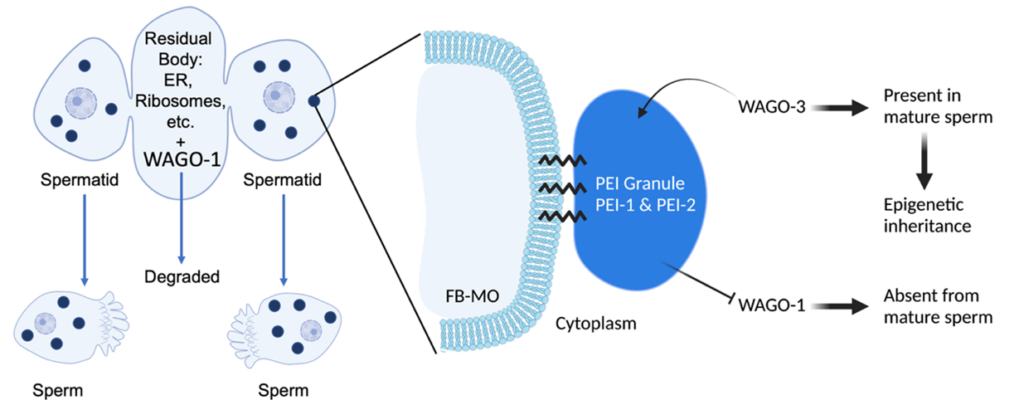Germ cells are characterized by various membrane-less organelles, collectively named germ granules. These contain many factors that are essential to germ cell function. Different granule types are highly selective for specific factors, and exchange of factors between different granule types is believed to be important. Hence, germ granules represent an exciting system with which to study the specificity and relevance of membrane-less organelles in vivo. Eukaryotic Argonaute proteins are crucial for proper gene regulation and genome stability in germ cells, and are found in different types of germ granules. However, neither how nor why specific Argonaute proteins localize to different germ granules is understood. A mechanistic understanding of these process would represent a major step towards understanding the function of germ granules, and membrane-less organelles in general. The nematode C. elegans is an excellent system for studying all of these aspects, as it expresses many different Argonaute proteins with specific localization characteristics, and is readily amenable to microscopy and genetics studies.
We will perform in vivo, in vitro and computational studies to understand in detail how a newly identified germ granule, the PEI granule, selectively recruits a specific Argonaute protein, WAGO-3, but not the highly homologous WAGO-1. This process supports germ cell development by enabling the inheritance of small, 20–30 nucleotide regulatory RNA molecules via sperm into embryos. Besides clarifying biological questions surrounding Argonaute protein functionality and epigenetic inheritance, we will provide new perspectives for polymer science, by bringing into focus the interactions of ordered and disordered domains and contributing to the development of new methods that can capture these interactions. Our studies include phase-separation studies, concepts of domain polymerization, interactions with fatty acids and RNA binding. In the longer term, we aim to understand the biophysics of Argonaute subcellular localization in general and its impact on gene regulation, and to be able to apply these insights to other membrane-less organelles.



